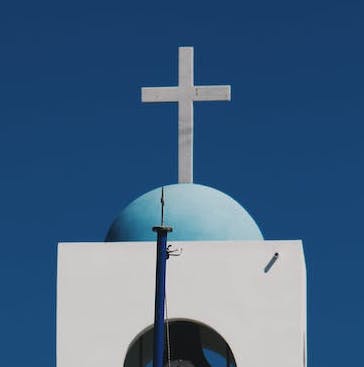The Ka Mate Haka, a captivating Maori war chant, resonates far beyond the shores of New Zealand, capturing the hearts and imaginations of people around the world. This article delves into the rich tapestry of the Ka Mate Haka, exploring its origins, cultural significance, and enduring legacy. Originating as a powerful expression of Maori heritage, the Haka has transcended its traditional role to become a symbol of unity, strength, and cultural pride on a global stage.
In this exploration, we will uncover the historical roots of the Ka Mate Haka, its evolution, and its profound impact within Maori culture and beyond. From the ceremonial grounds of New Zealand to the rugby fields where it has gained international fame, the Haka stands as a testament to the enduring spirit and resilience of the Maori people. Join us as we journey through the dynamic world of the Ka Mate Haka, a cultural phenomenon that continues to inspire and unite across borders.
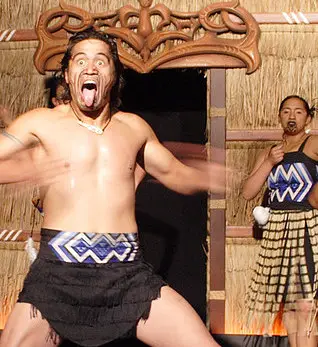
Table of Contents
Introduction to the Ka Mate Haka Chant and Its Historical Origins
The Ka Mate Haka chant is a profound emblem of Maori culture, echoing the depth of a tradition that transcends mere performance. This powerful expression of identity and heritage, originating from the indigenous Maori people of New Zealand, is not just a chant but a vibrant narrative of history, strength, and cultural pride.
Tracing its roots back centuries, the Haka, as a traditional Maori war dance, has been an intrinsic part of Maori culture, serving as a potent means of conveying emotion and story. Historically, it was performed by warriors before a battle, serving as a potent display of strength, courage, and unity, aimed at intimidating the opponent. This pre-battle ritual was more than a mere physical demonstration; it was a spiritual call to the ancestors, a summoning of inner strength, and an exhibition of tribal pride.
The Ka Mate Haka, in particular, holds a revered place in Maori history. Composed in the early 19th century by Te Rauparaha, a war leader of the Ngati Toa tribe, it is a narration of personal triumph and survival, a celebration of life over death. The chant begins with the iconic lines “Ka mate, ka mate! ka ora! ka ora!” which translate to “I die, I die! I live, I live!” These words poignantly reflect the fine line between life and death, a theme central to the Haka’s narrative and symbolizing Te Rauparaha’s own experiences of evasion and pursuit.
The cultural significance of the Ka Mate Haka extends beyond its lyrics. Every gesture, every vocal expression in the Haka is imbued with meaning, reflecting the Maori people’s deep connection with their ancestors and the land. The vigorous displays, the synchronized chants, and the spirited movements are more than just artistic expressions; they are the heartbeats of an ancient culture, reverberating through time.
As the Haka evolved, it became a fixture in various aspects of Maori life, including celebrations, ceremonies, and communal gatherings, each performance a testament to the tribe’s history and values. The adoption of the Haka by New Zealand’s national rugby team, the All Blacks, has further propelled this cultural dance onto the global stage, making it an iconic symbol of New Zealand’s sporting culture and an ambassador of Maori heritage worldwide.
The journey of the Ka Mate Haka, from a tribal war dance to a globally recognized cultural phenomenon, is a testament to the enduring power and relevance of cultural traditions. It serves as a vivid reminder of the rich historical tapestry of the Maori people and their ongoing influence in shaping the cultural landscape of New Zealand.
Ka Mate Haka: An In-depth Analysis
The Ka Mate Haka, far more than a mere cultural performance, is a rich tapestry of Maori tradition, encapsulating a depth of meaning and history. This section delves into an in-depth analysis of the Ka Mate Haka, exploring its lyrics, movements, and the profound cultural significance embedded within.
Lyrics and Translation At the heart of the Ka Mate Haka are its powerful lyrics, composed by Te Rauparaha. The chant begins with the iconic lines, “Ka mate, ka mate! ka ora! ka ora!” which translates to “I die, I die! I live, I live!” This dramatic juxtaposition of life and death encapsulates the essence of the Haka – a dance on the thin line between mortality and survival. The words are not just a literal expression of Te Rauparaha’s experiences but are also metaphorical, symbolizing the universal human experiences of struggle and triumph.
The subsequent lines, “Tēnei te tangata pūhuruhuru nāna nei i tiki mai whakawhiti te rā,” meaning “This is the hairy man who fetched the sun and caused it to shine again,” delve deeper into Maori mythology, referencing the power and vitality of the sun. This metaphorical imagery illustrates the renewal of life and the hope that comes with it, a central theme to many Maori narratives.
Cultural Significance Each element of the Ka Mate Haka is imbued with profound cultural significance. The Haka is more than just a dance; it is a historical recount, a spiritual invocation, and a display of the Maori people’s connection with their land and ancestors. The vigorous body slaps, stomping, and facial expressions such as the protrusion of the tongue (whetero) and the widening of the eyes (pūkana) serve to convey the intensity of the emotions involved. These movements are not arbitrary; they are carefully choreographed to represent different aspects of the story being told, with each motion symbolizing strength, agility, and the warrior spirit.
The Haka’s relevance extends beyond its traditional warrior roots; it is a living narrative, continuously evolving while maintaining its core values and historical significance. In contemporary times, it has taken on additional meanings, often performed in various contexts, including welcoming ceremonies, celebrations, and, most famously, before sports matches.
Performance and Interpretation The performance of the Haka is a dynamic process, demanding not only physical prowess but also emotional intensity and spiritual connection. Each performer must engage fully, not just with their body but with their heart and soul. This complete immersion is what gives the Haka its unique power and resonance. The chant, while simple in its structure, allows for a depth of interpretation, enabling different groups and individuals to express their particular connection to the tradition.
In conclusion, the Ka Mate Haka is a multifaceted cultural emblem, rich in history and meaning. It is a symbolic representation of the Maori spirit, encapsulating themes of life, death, struggle, and triumph. Its global recognition is a testament to its compelling nature, and
its continued relevance speaks volumes about the enduring nature of Maori cultural heritage. As the Haka continues to be performed around the world, it serves not only as a reminder of New Zealand’s rich indigenous culture but also as a universal symbol of unity, strength, and resilience in the face of adversity. Each performance of the Ka Mate Haka, whether on the rugby field or in a traditional ceremony, is a poignant reenactment of a storied past, a celebration of life, and a powerful expression of cultural pride and identity.
Haka in Rugby: A Global Phenomenon
The Haka, particularly the Ka Mate Haka, has transcended its traditional role in Maori culture to become a global phenomenon, largely due to its adoption by the New Zealand national rugby team, the All Blacks. This section explores the integration of the Haka into the sport of rugby and its impact on the global stage.
Adoption by the All Blacks The All Blacks’ performance of the Haka before their matches is one of the most iconic rituals in the world of sports. This tradition began in 1905 when the New Zealand national team first toured the British Isles, performing the Haka as a way of paying homage to their Maori heritage and intimidating their opponents. Over the years, this practice has evolved into a pre-match staple, eagerly anticipated by fans and players alike. The All Blacks perform the Haka with intense passion and precision, embodying the strength, unity, and fighting spirit that the dance represents.
The Haka performed by the All Blacks is more than just a pre-game ritual; it is a statement of identity and a display of respect for their cultural heritage. It serves as a bridge connecting the modern game of rugby with the ancestral traditions of the Maori people. Each performance is a powerful reminder of New Zealand’s multicultural fabric and the deep respect the country holds for its indigenous roots.
Impact on International Rugby The All Blacks’ rendition of the Haka has had a profound impact on international rugby, transforming it from a mere sport into a spectacle of cultural expression. The Haka’s presence in rugby has brought a unique aspect to international competitions, setting the All Blacks apart and creating an unparalleled pre-game atmosphere.
Beyond its role as a pre-match ritual, the Haka has also played a significant role in promoting cultural awareness and respect. Other rugby teams, both domestic and international, have responded to the Haka in various ways, sometimes with their own cultural performances, creating a dialogue of mutual respect and recognition of diverse traditions.
The Haka’s influence extends beyond the rugby field; it has sparked a global interest in Maori culture. Fans and players around the world have developed a deeper understanding and appreciation of the Maori heritage, thanks to the widespread exposure the Haka has received through rugby. This has led to increased interest in New Zealand’s history and traditions, with the Haka serving as a cultural ambassador.
Preservation and Respect As the Haka continues to be a central part of rugby, efforts have been made to ensure its respectful and accurate representation. The All Blacks and New Zealand Rugby have taken steps to educate players and fans about the Haka’s significance, ensuring it is performed with the reverence it deserves. This education extends to the audience, promoting an understanding that the Haka is not just a performance for entertainment but a sacred cultural tradition.
In conclusion, the integration of the Haka into rugby has not only enriched the sport but also brought Maori culture to the forefront of global consciousness. The All Blacks’ rendition of the Ka Mate Haka before each game is more than just a challenge to their opponents; it is a proud declaration of cultural identity, a symbol of unity, and a powerful reminder of the enduring spirit of the Maori people. As the Haka continues to captivate audiences worldwide, it stands as a testament to the dynamic and living nature of cultural traditions and their ability to bridge gaps, foster understanding, and celebrate heritage on a global scale.
Haka Beyond Rugby: Other Forms in Maori Culture
While the Haka has gained international fame through rugby, its roots and expressions extend far beyond the sport, playing a significant role in various aspects of Maori culture. This section explores the Haka in its broader cultural context, highlighting its diverse forms and ceremonial uses within the Maori community.
Ceremonial Uses The Haka, in its traditional Maori context, is a multifaceted performance used in various ceremonies and cultural events. It is performed not only as a war dance but also during important gatherings, celebrations, and rites of passage. These include welcoming important visitors, celebrating achievements, and marking significant life events such as weddings and funerals. In these contexts, the Haka serves as a powerful expression of community, unity, and respect, as well as a way to honor ancestors and convey collective emotions.
Each occasion calls for a specific type of Haka, with movements and lyrics that are appropriate for the event. For instance, a Haka performed at a wedding would differ significantly in tone and content from one performed at a funeral. This versatility showcases the Haka’s ability to convey a wide range of emotions, from joy and celebration to grief and mourning.
Variations Across New Zealand The Haka is not a singular dance but a genre of several types, each with unique characteristics and origins. While the Ka Mate Haka is the most widely recognized, there are many other Haka chants and dances, each belonging to different Maori tribes (iwi). These variations reflect the diverse stories, histories, and traditions of the tribes. Some Haka are gentle and lyrical, while others are more vigorous and intense, depending on their purpose and the message they are meant to convey.
For example, the Kapa Haka is a form of traditional Maori performing arts that includes not just the Haka but also other elements like poi dances and choral singing. Kapa Haka performances are a common feature in cultural festivals and competitions, showcasing the rich tapestry of Maori performing arts.
Educational and Cultural Significance In recent years, there has been a growing emphasis on preserving and teaching the Haka within New Zealand, recognizing its importance as a cultural treasure. Schools and cultural groups often include Haka in their curriculum, ensuring that younger generations understand and can perform this important aspect of their heritage. These educational efforts extend beyond the Maori community, offering all New Zealanders, and even international students, an opportunity to learn about and participate in this unique cultural practice.
Moreover, the Haka plays a critical role in maintaining and revitalizing the Maori language (Te Reo Maori). As the lyrics of the Haka are composed in Te Reo Maori, its practice promotes the use and preservation of the language, which is a crucial aspect of Maori identity and cultural heritage.
Global Cultural Exchange The popularity of the Haka in international settings has opened doors for cultural exchange and understanding. Maori groups often perform the Haka at international cultural festivals and events, offering audiences around the world a glimpse into the rich cultural landscape of New Zealand. These performances not only entertain but also educate, fostering a deeper appreciation and respect for Maori traditions and ways of life.
In conclusion, the Haka is a vibrant and vital component of Maori culture, far surpassing its role in rugby. It embodies the history, language, and spirit of the Maori people, serving as a powerful medium for storytelling, cultural expression, and community cohesion. The diverse forms of the Haka, each with its own significance and beauty, highlight the richness of Maori cultural heritage and its ongoing relevance and vitality in New Zealand and beyond.
FAQ
Can anyone learn to perform the Haka?
Yes, anyone can learn to perform the Haka, but it is important to approach it with respect and understanding of its cultural significance. Learning the Haka often involves understanding its history, language, and the meanings behind the movements and words.
Is the Haka used in contexts other than sports?
Yes, the Haka is performed in various social and ceremonial occasions within Maori culture, including weddings, funerals, and official welcoming ceremonies. It is also used in educational settings and cultural festivals to celebrate and preserve Maori heritage.
See Related Posts

Gregorian Christmas Chants
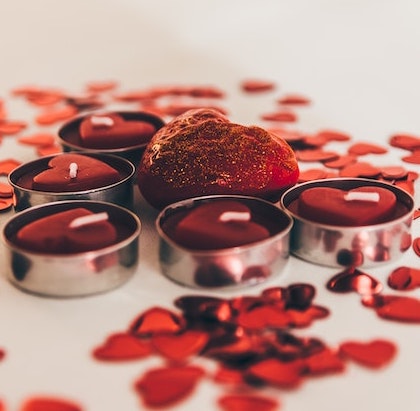
Love Spell Chants
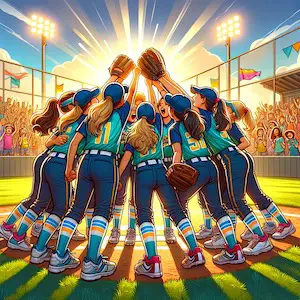
Best Softball Chants for U12
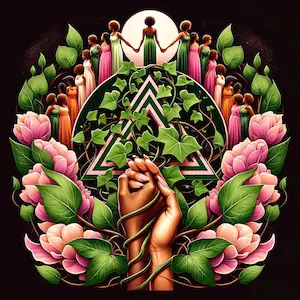
AKA Sorority Chants
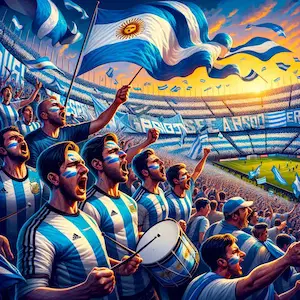
Argentina Football Chants

Short Chants and Cheers
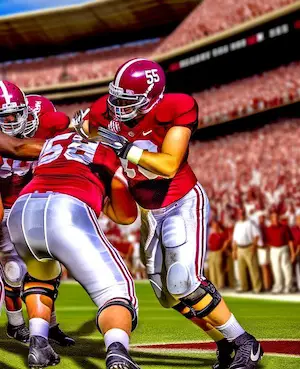
Alabama Football Chants
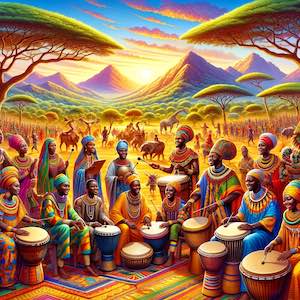
Everything to Know About African Chants
